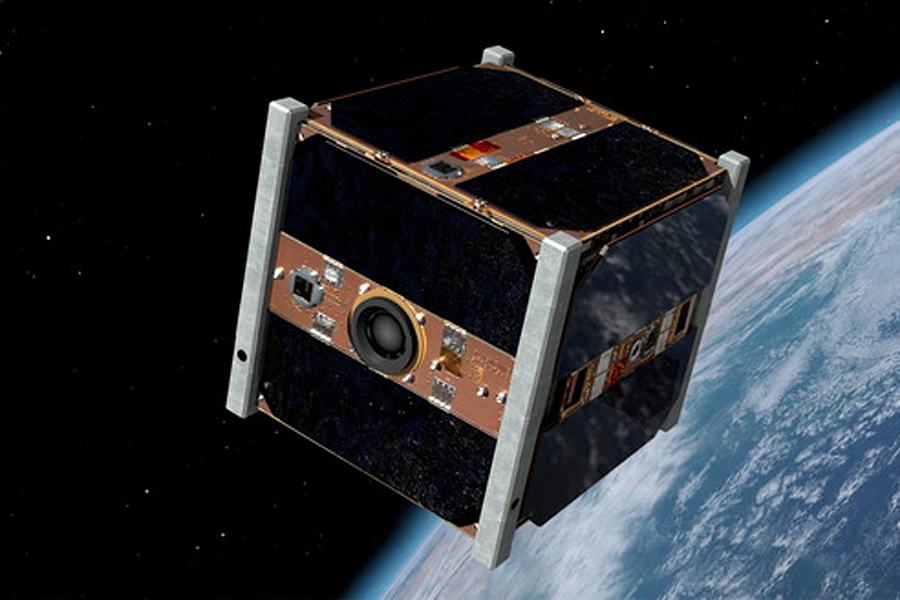How an orbital 'Pac-Man' could help clean up space junk
Loading...
A team of engineers has been at work for the past three years to develop a space cleanup satellite. The intent is to eliminate threatening, human-made orbital debris.
The worry is not new – there's lots of clutter to pick and choose from, be it broken down satellites to tossed away rocket stages.
A new entry to de-litter Earth orbit is the Clean Space One project, spearheaded by researchers from eSpace, Ecole Polytechnique Fédérale de Lausanne's (EPFL) Center for Space Engineering and Signal Processing 5 Laboratory and HES-SO University of Applied Sciences and Arts Western Switzerland. [7 Wild Ways to Clean Up Space Junk]
Their intent is to trap a small satellite – SwissCube – tossed into space in late 2009. SwissCube is a joint cubesat project of various laboratories at EPFL and universities in Switzerland.
Sizing up the situation
This small cubesat-type satellite, measures just 4 inches by 4 inches (10 centimeters by 10 centimeters). Barring an unforeseen event, SwissCube's demise has been programmed for 2018.
The size of SwissCube makes it tough to grasp, but it also has darker and lighter parts that reflect sunlight differently, explains Christophe Paccolat, a PhD student working on the concept.
CleanSpace One could be launched as early as 2018 in collaboration with the company S3, headquartered in Payerne. The engineering team is reporting a major step forward in designing an approach and capture system – a so-called "Pac-Man" solution.
The prototype CleanSpaceOne resembles a net in the form of a cone that unfolds and then closes back down once it has captured the small satellite. It will trap the small satellite and the two would combust together in the atmosphere.
Other work on the initiative involves creating and testing visual approach algorithms on the cleanup satellite's cameras. To be accurate, they must take into account a variety of parameters, a team press statement notes, such as the angle of illumination of the sun and the relative speed at which the cubesat is moving through space.
Larger margin
Muriel Richard-Noca, head of the project, emphasizes the extreme delicacy of the mission: "It only takes one error in the calculation of the approach for SwissCube to bounce off CleanSpace One and rocket out into space."
Adds Michel Lauria, a professor of industrial technology at Hepia Lab in Geneva: "This system is more reliable and offers a larger margin for maneuvering than a claw or an articulated hand."
The next stage of work involves fabricating a more true-to-life engineering model – which will be more accurate than the prototypes – and more extensive testing.
Take a look at this team's approach to gobble up space debris by going to: https://www.youtube.com/watch?v=pclqbhRKkdM
Leonard David has been reporting on the space industry for more than five decades. He is former director of research for the National Commission on Space and is co-author of Buzz Aldrin's 2013 book "Mission to Mars – My Vision for Space Exploration," published by National Geographic, with a new updated paperback version to be released in May. Follow us @Spacedotcom, Facebook and Google+. Originally published onSpace.com.
- Cartoon Satellite Helps Explain Serious Space Debris Threat | Video
- Space Junk Explained: How Orbital Debris Threatens Future of Spaceflight (Infographic)
- Photos: Space Debris Images & Cleanup Concepts
Copyright 2015 SPACE.com, a Purch company. All rights reserved. This material may not be published, broadcast, rewritten or redistributed.









